History of the CCNA Certification
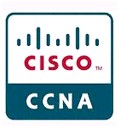
If you read our article on the History of the CCIE Certification, you are aware that the Cisco CCIE certification was introduced in 1993 five years before the CCNA certification. The CCIE certification was aimed at those hardcore networking geeks in the early days of corporate networking. However, this left a glaring hole for those who wanted to break into the new and exciting world of computer networking.
So in 1998 at the Philadelphia Networker show, Cisco introduced the entry level Cisco Certified Network Associate (CCNA) certification as a precursor to all the new Cisco certifications (the CCNP certification and a few others were also introduced at this time). This was a single exam and the exam number was 640-407 (I have no idea why so many other articles state the first exam was 640-507. I am guessing they are just regurgitating other people’s articles which are incorrect). Back in these days when I achieved my CCNA, the classroom I sat in each student had one 2501 router and we had to partner up with another student to see routes propagate between our routers. We also had one 1924 switch to share between the whole class of 12 students! Why? Well, back in 1999 when I took the exam, Cisco 2501 routers were selling for $1,000 each on the used market as were the switches. So you can see how much they have dropped in price over the years.
The initial exam consisted of 60 to 70 questions and you were provided 75 minutes to complete the exam and the cost was $100. So let’s take a look at what concepts were on the initial 1998 CCNA exam 640-407 to compare against today’s CCNA exam. First we will look at the items that were on the initial exam and that still reside on the current 200-120 exam so you can see the core has not changed that much.
OSI Model – The foundation of how data travels up and down the data stack and allows for inter-operability.
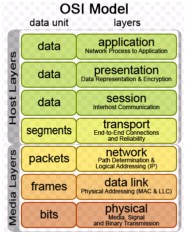
Now let’s look at some of the topics that were on this version of the exam that were since removed from the exam. AppleTalk – Wow, I almost forgot about the little AppleTalk boxes used by the old Mac 128, 512, SE, Ci, CX models and such. Most of you probably have no idea what I am even talking about. Good times though back then.
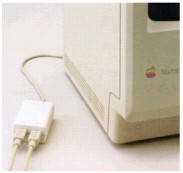
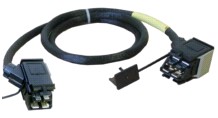
IGRP– Interior Gateway Protocol was a Cisco proprietary protocol which eventually gave way to the open standard EIGRP protocol. RIP v1 – The first revision of RIP would later give way to RIP v2 and then be totally removed from the exam objectives. ISDN – Remember the days of thinking how fast two 56kbps modems basically bundled together were? ATM – An older fixed 53 byte cell technology using virtual circuits. 1900 Switches – The hybrid Cat/IOS 1900 IOS commands were covered in this version of the exam.
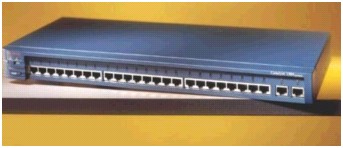
So fast forward two years to 2000 and exam 640-507. Really there was very little change to the exam except I am pretty sure this is where they removed AppleTalk and Token Ring from the exam and made the announcement of IOS 12.x was being covered on the exam. There were very few changes in syntax and commands from a CCNA level perspective between 11.x and 12.x so it was pretty much a non event even though it freaks out newbies that the IOS is a different version. Unlike when Microsoft changes an OS version from XP to Vista or such and there is a lot of change, the Cisco IOS changes are generally simply a few new major commands that are generally not covered at the CCNA level. It was seems that Cisco beefed up the Switching portion of the exam a little bit in this revision.
Then in March of 2002, the exam incremented to the 640-607 exam and the cost increased to $125. Cisco actually called this the CCNA 2.0 exam which is kind of confusing since we had the 640-407 and 640-507 previously so you might think this is actually version 3.0. It is significant to note that there were initially no changes to the exam objectives. But what changed was Cisco was trying to eliminate the brain dump sites that were starting to pop up. So Cisco included simulation questions in which you had to actually configure interfaces at the CLI as these types of questions are a lot harder to memorize. These simulations were based on the Cisco 2600 series of routers and the 1900 series of switches. Due to the simulation questions, Cisco increased the time allocated for the exam from 75 minutes to 90 minutes. They also decreased the number of questions on the exam from 60 to 70 to 55 to 65 questions per exam. Something else I find significant is that Cisco started to tweak the objectives of the 640-607 exam during the course of this exam number and accordingly changed the questions that were in the exam pool. You would see things like IPX/SPX dropped and hexidecimal conversion questions also being dropped from the objectives mid major exam revision. This helped to keep the question pool fresh.
Then in late 2003 we had some significant changes and the 640-801 exam was introduced. You may note how they incremented from the previous 407, 507, 607 numbering system and jumped up to 801 signifying a revamped exam. Also an option was created to break the single CCNA exam up into two condensed exams each covering about 50% of the CCNA exam topics. We will touch on this more in a bit. The major topic dropped in this version of the exam was Cisco’s proprietary IGRP protocol for the open source EIGRP.
Now let’s take a look at the new topics that were added to the CCNA blueprint as there is a lot more of that than removals which just increases the information overload factor which supports Cisco’s new two exam format. Classless routing including VLSMs – now we are making subnetting really hard and interesting. Got to conserve those IPs! RIP v2 – an enhancement to RIP v1 which is now a little less chatty. Single Area OSPF – A dynamic protocol that is fast becoming a favorite in large company networks. EIGRP – Another dynamic protocol that is fast becoming a favorite in large company networks. 2950 Switch Configuration – Out with the 1900s, in with the 2950s!

Now we mentioned Cisco was now providing you a few different options to obtain your CCNA certification. The first way was the tradition single exam which is now called the composite exam. The second is the two exam option where you first need to pass the INTRO 640-821 exam and then the ICND (Inter-Connceting Network Devices) 640-811 exam to achieve your CCNA certification. In the two exam format, there are 60 minutes in length each instead of 90 minutes for the single, composite exam. The cost of each exam is $100 compared to $125 for the composite exam. At this time of the Cisco certification evolution, passing either of the exams did not earn the candidate any type of certification. We will see that evolve later.
Four years later in October 2007 we see the update of the exam to the 640-802revision. The composite exam consisted of 50-60 questions and 90 minutes to complete them all. The cost of the single composite exam initially went up to $250 and then later in 2012 increased to $295. The two exam option was 50 to 60 questions in 90 minutes for the new ICND1 640-822 exam and 45 to 55 questions in 75 minutes for the new ICND2 640-816 option. The cost of the two exam option increased initially to $125 and then also in 2012 to $200 each. Now this is when Cisco introduced the new CCENT (Cisco Certified Entry Networking Technician) certification. You would receive this certification when you passed your ICND1 exam. Honestly at this time, most people in the computer networking space simply overlooked this certification as being irrelevant at the time. But that will soon change and we will discuss that shortly.
So let’s first take a look at what was removed from the 640-802 exam as that is always the shorter list. Simply Cisco removed ISDN from the exam format and updated the router platform to the 1841 routers and 2960 series switches.

Now what did they add to the 640-802 CCNA exam? Security Device Manager (SDM) – Which was a grapical interface to configure your router so you did not have to learn the command line. Well, at least in theory. It never really took off and it was removed about 2 years later while still the 640-802 exam. IPV6 – With the IP Address shortage looming, Cisco tries to kick-start the IPv6 adoptance with their techs. Advanced EIGRP and OSPF – We will see advanced EIGRP filter in during the run of the 640-802 exam as we will see increasingly difficult OSPF concepts introduced. Security – Cisco starts to introduce the concept of Security as hacking is becoming more of a corporate concern. Troubleshooting – To marry up with the CCNP revisions that will be introduced about a year later, Cisco starts to introduce the concept of knowing how to troubleshoot a device and not just set it up. Rapid Spanning Tree Protocol (RSTP) – As STP evolves, so does Cisco and they capture it on the exam. Switch Security – Again, as security is concern, Cisco starts to hammer this home on the exam.
About a year later in 2008, Cisco saw the need to really break out different disciplines for their CCNA track. They had different disciplines at the CCIE level such as CCIE Routing and Security, CCIE Wireless, CCIE Voice, CCIE Security, CCIE Storage, so why not at the CCNA level? Thus the introduction of the CCNA Security certification exam 640-553, the CCNA Voice 640-460 exam and the CCNA Wireless 640-721 exam. As these certifications were introduced, it seems we seen that there was less focus on seeing these concepts on the CCNA exam as they seemed to be phased out during the 640-802 exam run. I am not going to go into great detail on these exams, but the three exams were updated in 2012 to CCNA Security 640-554, CCNA Wireless 640-722 and CCNA Voice 460-461.
Finally to 2103 and the new CCNA 200-120 exam. As before, we will first note what was removed from the exam which was formally SDM, Wireless, and Security as mentioned above. So what was added? EtherChannel Layer 3 Redundancy Protocols Cisco Licensing and IOS 15.x Syslog and Netflow Troubleshooting, troubleshooting and troubleshooting Multi-Area OSPF OSPFv3 Tons more on IPv6 EIGRP for IPv6
I am not going to cover the new 200-120 exam in detail as it is covered, along with the ICND1 and ICND2 changes in our CCNA Exam Update article.
But I think what you will find by reviewing the history here is the core of the CCNA which is TCP/IP, routing and switching is still intact from 15 years ago. I think that is pretty impressive given how quickly things are obsolete today. So study hard, study right, and ace your CCNA exam with one of our kits here at CertificationKits!
